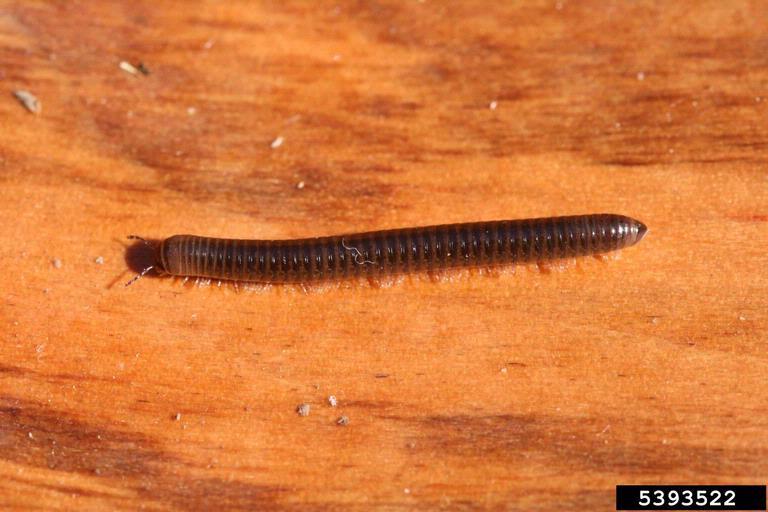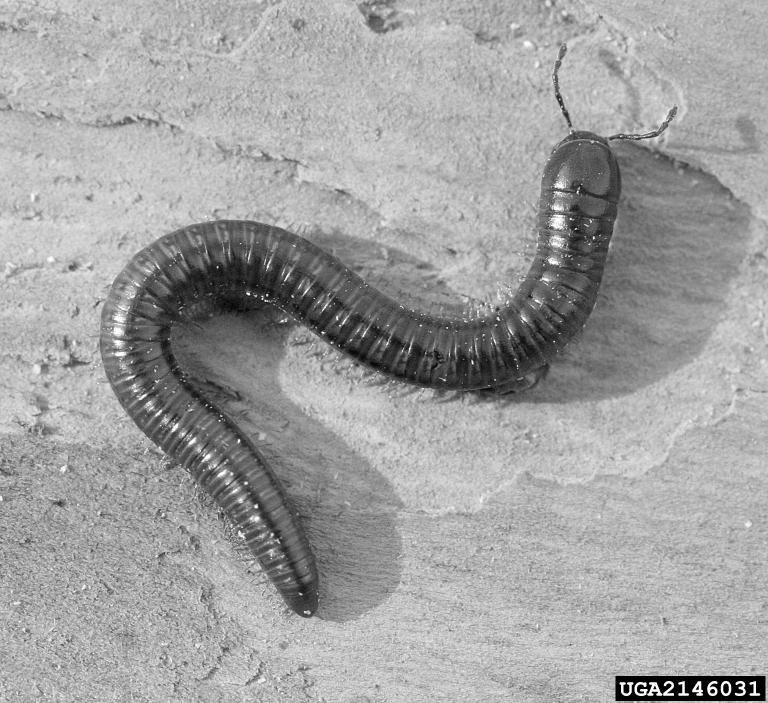Millipedes and Schools
On this page:
Basics

Photo Credit: Whitney Cranshaw (CSU)
Millipedes are arthropods and, unlike insects, do not have three clearly defined body sections, each with a pair of legs. Millipedes:
- Are worm-like animals with numerous body segments and legs.
- Are commonly seen in yards and occasionally enter buildings.
- Feed on decaying plant matter and are found in moist environments, as they cannot survive long in dry conditions.
Life Cycle: A female millipede can lay up to 300 eggs in the soil, which hatch within a few weeks. Millipedes go through 7-8 life cycle stages from birth to adult. Millipedes mature within 2-5 years and live for several years after maturation.
Health Concerns
Millipedes are not dangerous and will not damage your building or food. When disturbed they do not bite, but some species exude a defensive liquid that can irritate skin or burn the eyes.
Integrated Pest Management (IPM) Strategies

Photo Credit: David Cappaert (Michigan State University)
Millipedes rarely need to be “controlled,” as they do not cause damage, pose no health hazard and enter structures only in search of food. The best IPM strategies include:
- Sealing cracks and openings into the structure.
- Eliminating moist hiding places and food sources in or around the structure (e.g., decaying grass or rotting wood).
- Ensure that subfloor crawl spaces and basements are dry.
Pesticides are rarely, if ever, required.
For More Information
- Pillbugs, Sowbugs, Centipedes, Millipedes and Earwigs(4 pp, 332 K, About PDF) Exit - The University of Florida's fact sheet
- IPM for Millipedes Exit - provides information to manage non-insect arthropods.
- Read more about integrated pest management.
